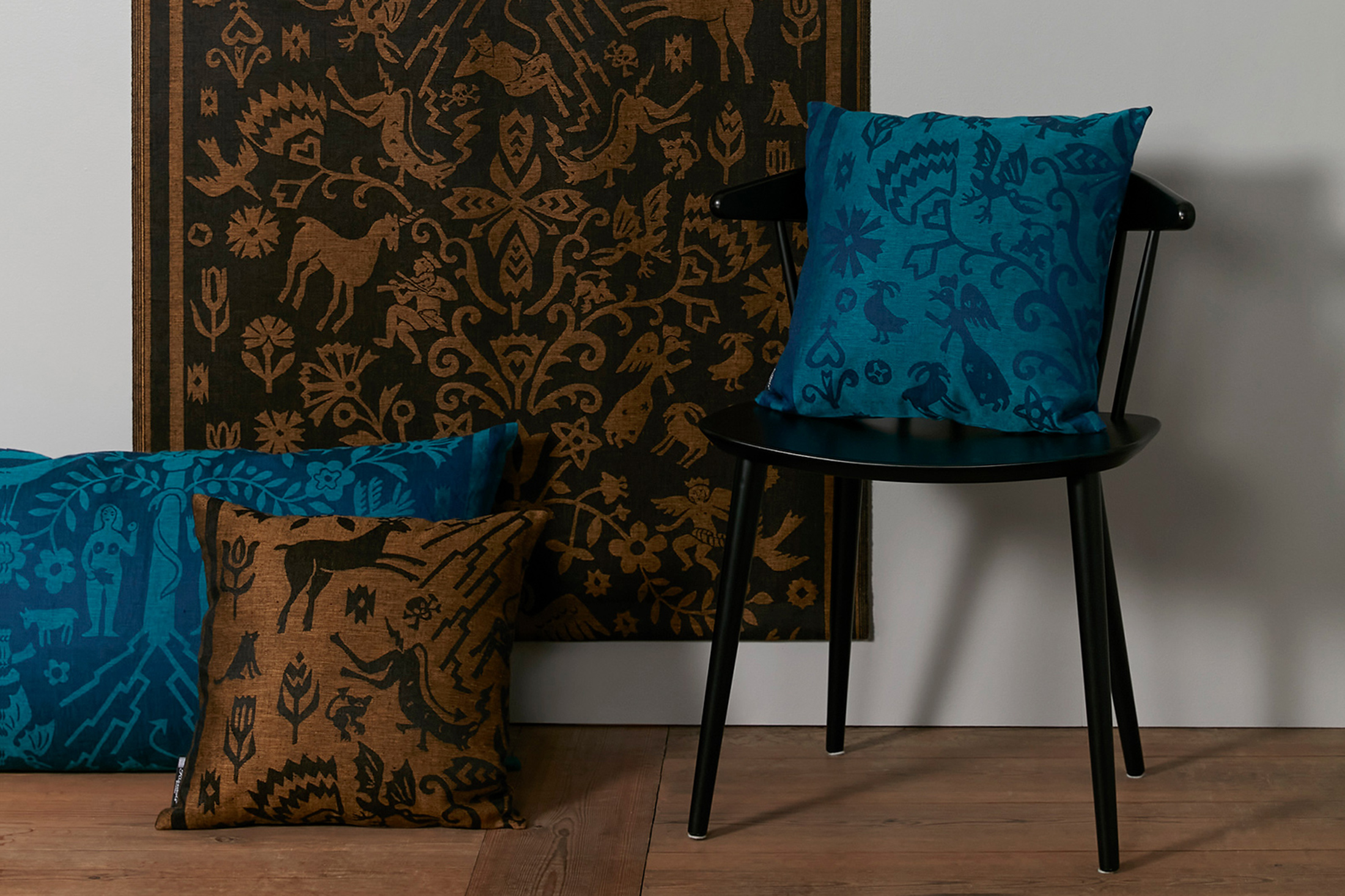Damask – Fabric for princes

Heaven and Hell by Wanja Djanaieff Heaven – a damask story
The artistic weaving technique known as damask is said to have first been created in Damascus, hence the name. It was the fabric that was woven for the splendid clothes of the princes and for purely decorative purposes. Even today, damask is considered one of the absolute most elegant fabrics. Damask is a mostly plain colored fabric, where the pattern and/or figures are formed in the warp satin on the bottom of the weft satin or vice versa. The effect is achieved by the light being reflected differently from the warp and weft surfaces, so that the pattern either appears glossy against a matte background or matte against a glossy background. The technique can also be used for two-color patterns with a very elegant effect.
Growing, preparing, spinning and weaving linen is an ancient art in our country, but the art of weaving patterned linen was hardly known in Sweden before the 17th century. Of course, the splendor-loving "great power era" attracted skilled weavers here. In 1696, Queen Hedvig Eleonora placed large orders for tablecloths and napkins with some weavers in Stockholm. Thus, Swedish linen damask production started. There are still three napkins preserved from the early 18th century with her crowned name cipher and "Three crowns" woven into it. Today, tablecloths and napkins in linen damask with Sweden's "Three Crowns" woven in by us at Klässbols Linneväveri are delivered to the Swedish embassies all over the world.


